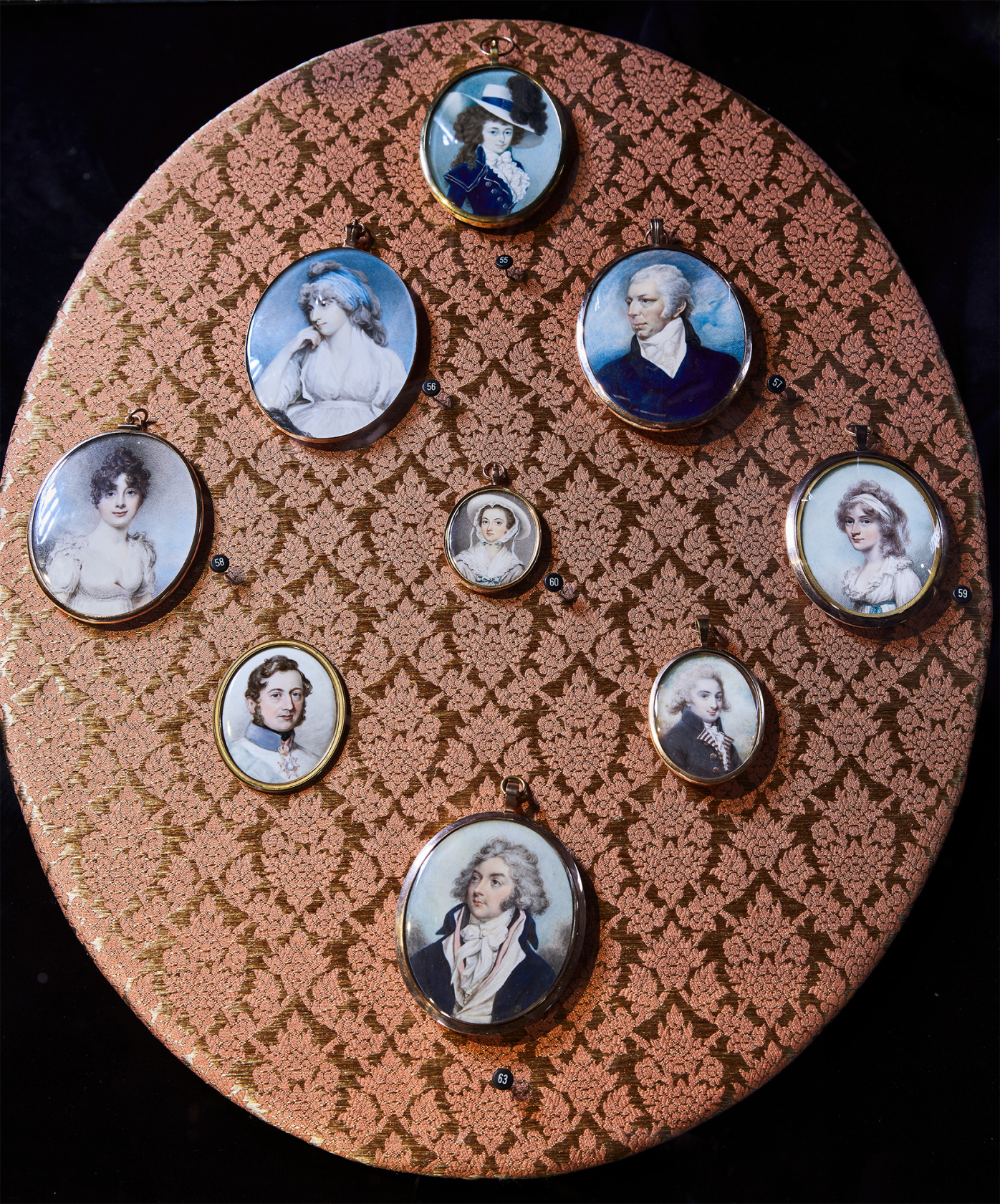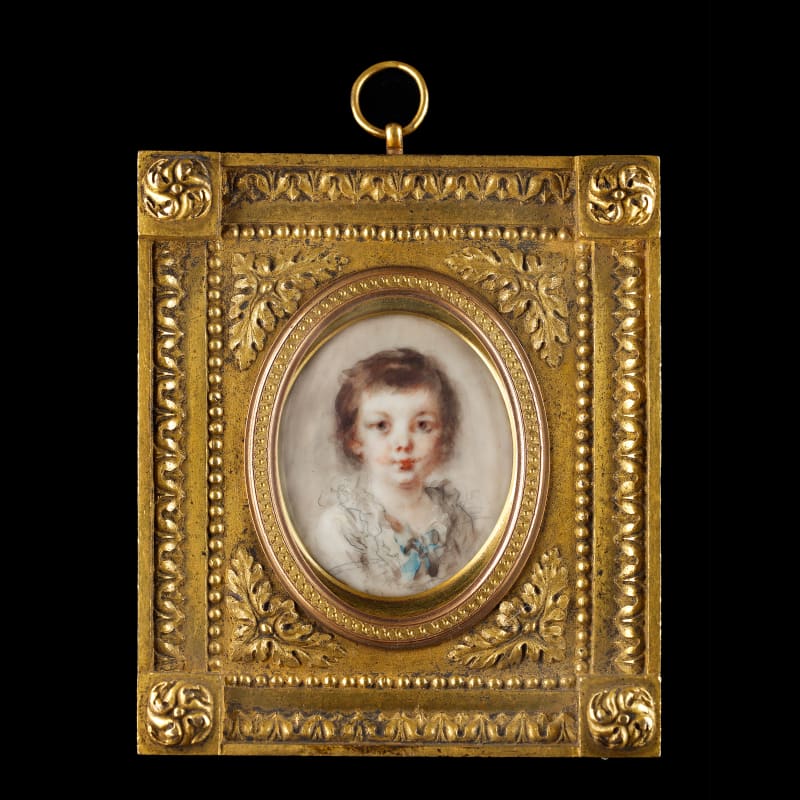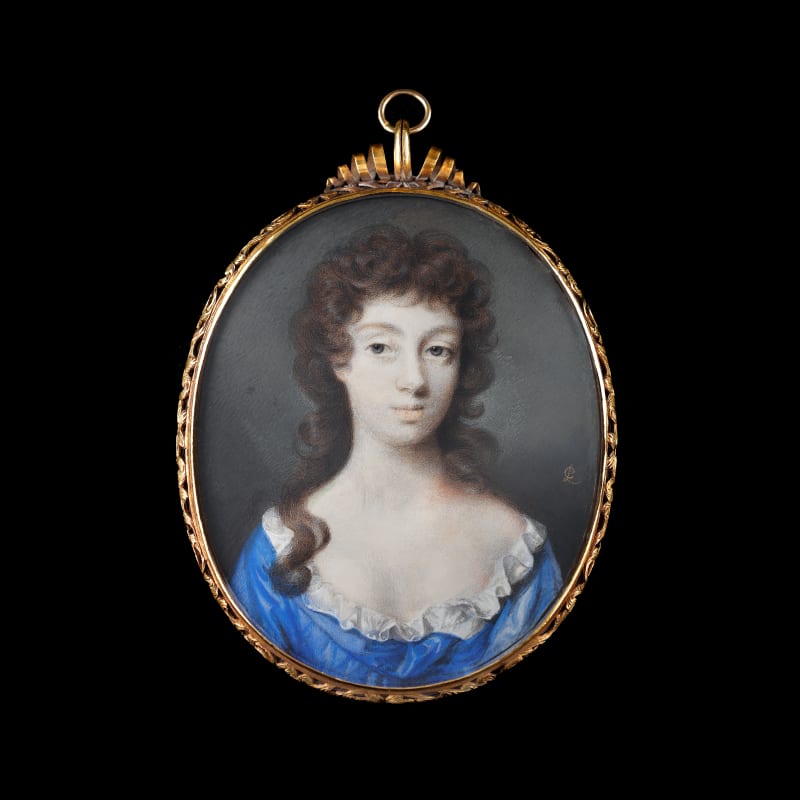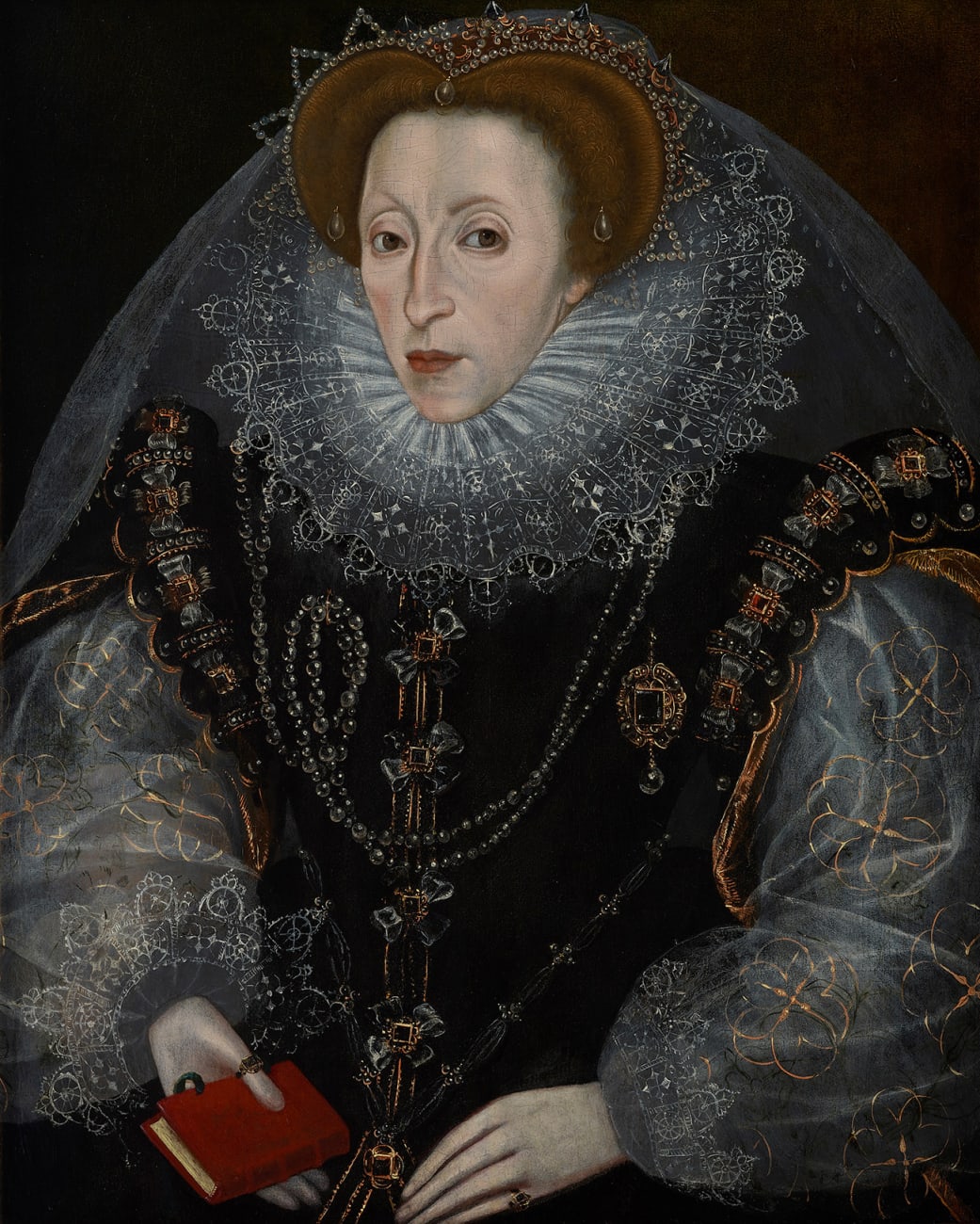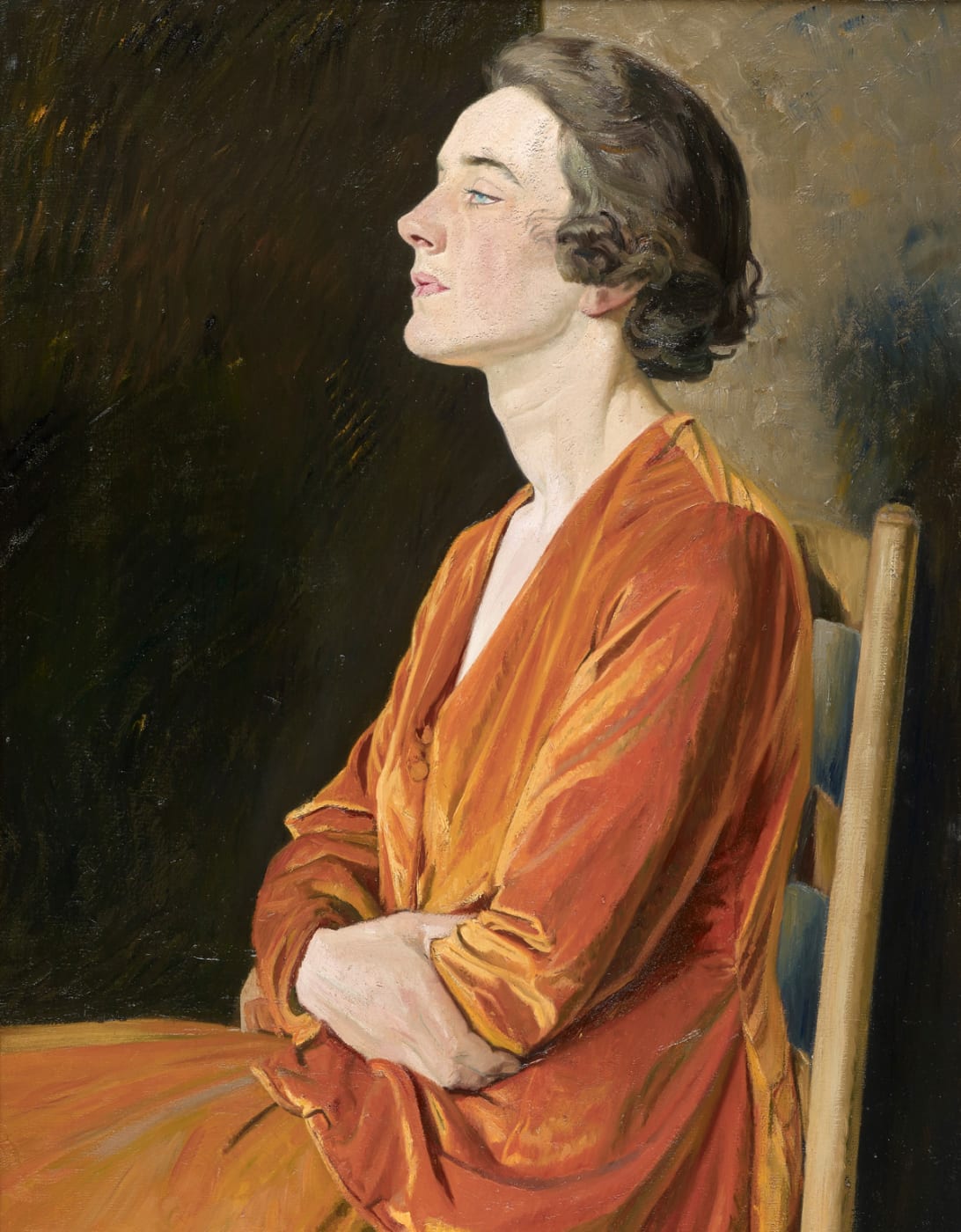William Essex was chiefly an enamellist who trained under Charles Muss (1779-1824), enamel painter to William IV. First exhibiting at the Royal Academy in 1818, he would continue to show at various other prestigious societies such as the British Institution, the Society of British Artists and the Old Water Colour Society until 1864.
Commencing his career by collaborating with his teacher, or so it is thought, it was most likely through Muss that Essex was introduced to court circles. By 1827, Essex was receiving commissions of his own from the likes of George IV. Aside from his portraits, he is also known for his paintings of dogs, many of which served as decoration on tie-pins. He was often known to copy artworks and regularly reduced larger paintings to enamels, working under a magnifying glass. He would copy from both contemporary works as well as old master paintings and miniatures, such as those at Windsor, as he did later...
William Essex was chiefly an enamellist who trained under Charles Muss (1779-1824), enamel painter to William IV. First exhibiting at the Royal Academy in 1818, he would continue to show at various other prestigious societies such as the British Institution, the Society of British Artists and the Old Water Colour Society until 1864.
Commencing his career by collaborating with his teacher, or so it is thought, it was most likely through Muss that Essex was introduced to court circles. By 1827, Essex was receiving commissions of his own from the likes of George IV. Aside from his portraits, he is also known for his paintings of dogs, many of which served as decoration on tie-pins. He was often known to copy artworks and regularly reduced larger paintings to enamels, working under a magnifying glass. He would copy from both contemporary works as well as old master paintings and miniatures, such as those at Windsor, as he did later in his life.
In 1834, Essex was commissioned to paint an enamel miniature of Charlotte, Duchess of Northumberland, after a work by Sir Thomas Lawrence. Whilst he was already relatively well-established in royal circles, this enamel of the governess to Queen Victoria brought Essex more immediately into the Queen’s consciousness. Thus, having built up a successful practice throughout the 1820s and 1830s, in 1839, he was appointed enamel painter to Queen Victoria, and to Prince Albert in 1841.
Queen Victoria took advantage of Essex’s skills in duplication to commission several enamel paintings of herself after portraits by Franz Xaver Winterhalter. These miniatures were set into bracelets and sent out as royal gifts. Essex was also patronised to create copies of portraits of the queen’s family and friends, which largely functioned as gifts to her husband, and were mostly completed within the same year as the originals. Despite Essex’s notable success, however, he fell into financial difficulty in his later life, and was consequently forced to ask the Queen for a pension as a supplement to his artist’s annuity of £40.
This enamel work is one of two posthumous portrait miniatures of the same type painted by Essex. The other is in the Royal Collection. Both are painted after a watercolour by Sir William Ross, painted in 1842, which was later printed and included in an album of portraits containing prints and photographs compiled by Queen Victoria and Prince Albert. The sketch was painted during the visit of Count Emanuel Mensdorff-Pouilly and his sons to the British court in May 1842. Queen Victoria favoured all four brothers and described Hugo to Leopold I, King of the Belgians, as ‘very kind & good’.
The sitter, Count Hugo Mensdorff-Pouilly, was the eldest son of Count Emanuel Mensdoff-Pouilly and of Sophie, daughter of Francis, Duke of Saze-Coburg-Saalfeld, and first cousin of Queen Victoria and Prince Albert. The Mensdorff-Pouilly family originated in the barony of Pouilly in Stenay, on the river Meuse in Lorraine, after their family emigrated during the French revolution. Indeed, the name Mensdorff derives from a community in the county of Roussy, Luxembourg.
Count Hugo, much like his father and uncles, pursued a career in the military, and became a colonel commandant of a regiment of Austrian Cuirassiers. Queen Victoria lamented his early death, aged 41, describing him in her journal entry for 29th October 1847 as a ‘most kind hearted honest, affectionate being, the most dutiful & loving of sons & kindest of friends and relations’ (Journal: 29 October 1847).



